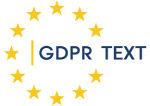Artykuł 39 RODO. Zadania inspektora ochrony danych
b) monitorowanie przestrzegania niniejszego rozporządzenia, innych przepisów Unii lub państw członkowskich o ochronie danych oraz polityk administratora lub podmiotu przetwarzającego w dziedzinie ochrony danych osobowych, w tym podział obowiązków, działania zwiększające świadomość, szkolenia personelu uczestniczącego w operacjach przetwarzania oraz powiązane z tym audyty;
(EN) Article 39 lists the main (but not all) tasks that fall under the remit of the Data Protection Officer (DPO). Among them, there are three main functions (although DPO competences are not necessarily limited to them):
- Consulting (39.1a, c),
- Control / monitoring (39.1b),
- Relationship with the supervising authorities (39.1d, e).
1. The consulting function means that the DPO provides information and explanations about the GDPR and its compliance to the controller and processor as well as to the employees of the controller and processor who are involved in the processing of personal data. In particular the role of DPO is important in the context of Data Protection Impact Assessment (DPIA), because DPO advises and monitors its implementation according to Article 35 of the GDPR. WP29 recommends that the controller seeks the advice of the DPO, e.g. on the following issues:
- whether or not to conduct a DPIA
…
Zaloguj się
aby uzyskać dostęp do pełnego tekstu
(EN) ISO/IEC 27701, adopted in 2019, added a requirement additional to ISO/IEC 27002, section 6.1.1.
Here is the relevant paragraph to article 39 GDPR:
6.3.1.1 Information security roles and responsibilities
Implementation guidance
The organization should designate a point of contact for use by the customer regarding the processing of PII. When the organization is a PII controller, designate a point of contact for PII principals regarding the processing of their PII (see 7.3.2).
…
Zaloguj się
aby uzyskać dostęp do pełnego tekstu

(EN) ISO/IEC 27701, adopted in 2019, added a requirement additional to ISO/IEC 27002, section 7.2.2.
Here is the relevant paragraphs to article 39(1)(b) GDPR:
6.4.2.2 Information security awareness, education and training
Implementation guidance
Measures should be put in place, including awareness of incident reporting, to ensure that relevant staff are aware of the possible consequences to the organization (e.g. legal consequences, loss of business and brand or reputational damage), to the staff member (e.g. disciplinary consequences) and to the PII principal (e.g. physical, material and emotional consequences) of breaching privacy or security rules and procedures, especially those addressing the handling of PII.
NOTE Such measures can include the use of appropriate periodic training for personnel having access to PII.